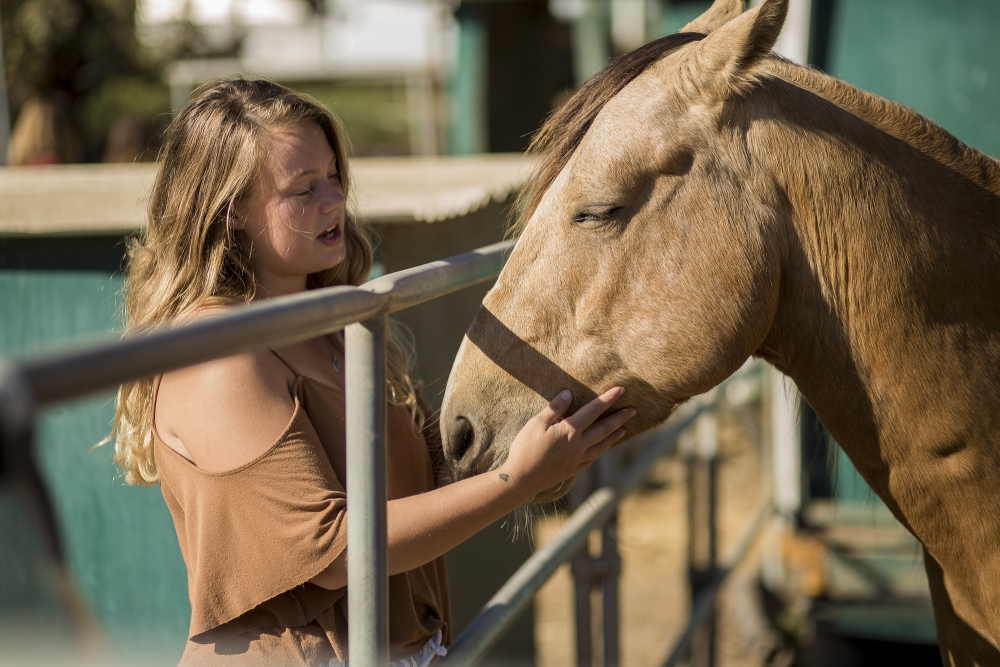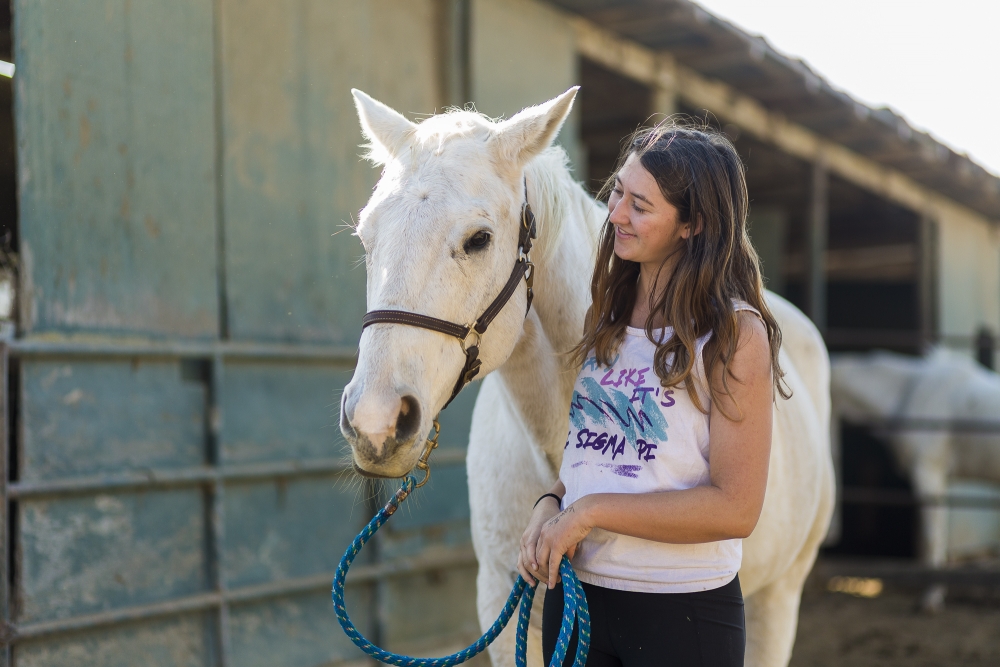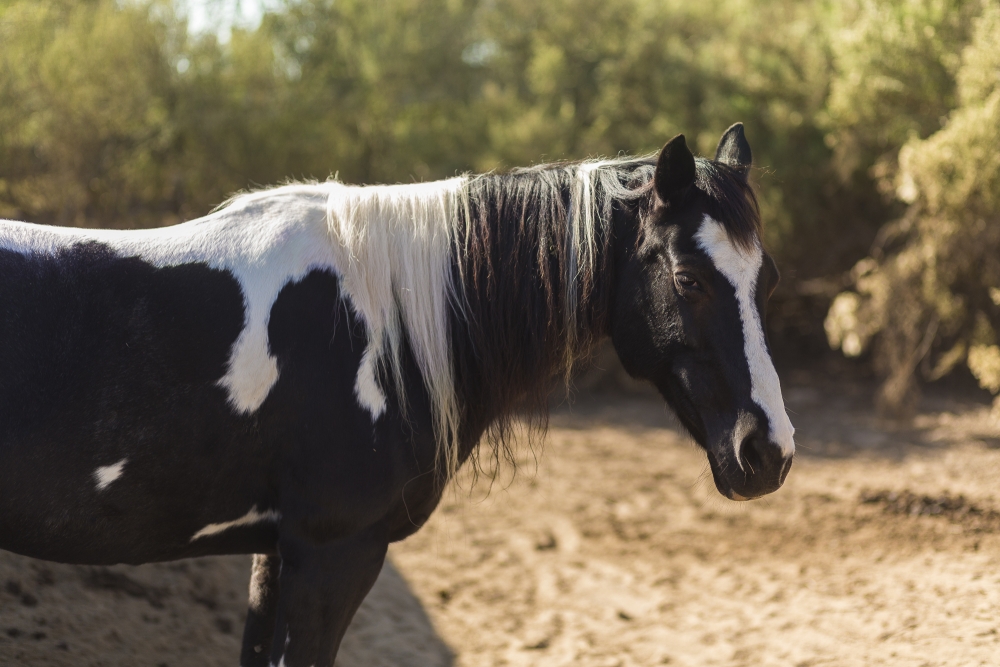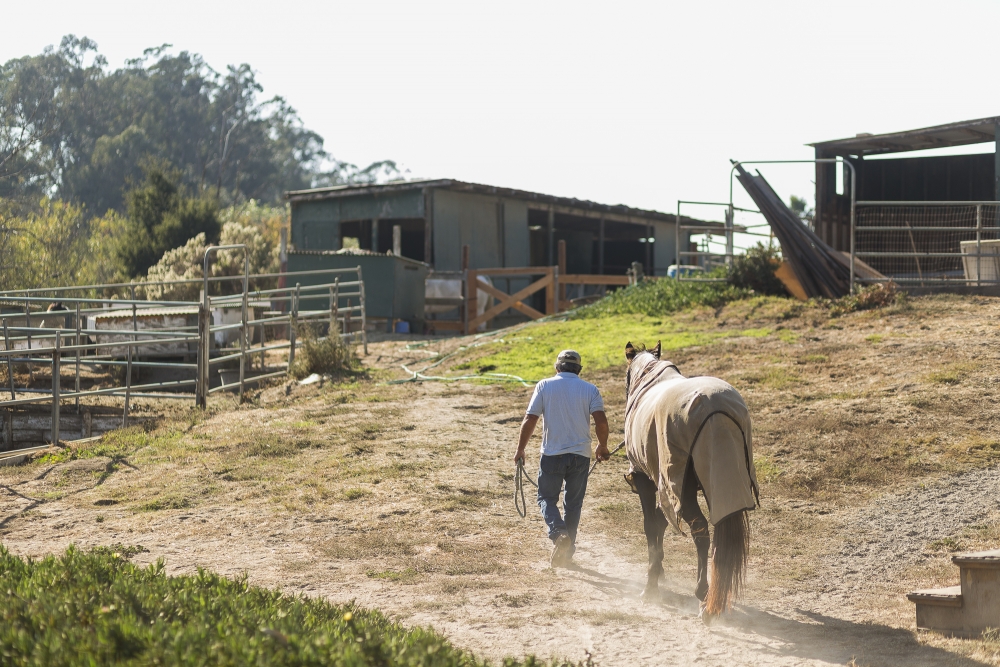Not Horsing Around
First-year students at UC Santa Barbara may be discouraged from bringing cars to campus, but they can bring their horses.
The UC Santa Barbara Horse Boarders Association (HBA), a student-run co-op organization, provides safe and affordable accommodations for horses owned by students, faculty, staff and community members.
The group, which has been operating continuously for 40 years, leases the west campus plot of land where their stables are located from the university. Operating as a non-profit and requiring all members to pitch in with feeding and maintenance enables them to keep costs for boarders low (their motto: “You CAN afford to bring your horse to college.”)
A Unique Solution
The organization is unique, according to Alex Sterritt, a fourth-year biology student and chairperson of the HBA’s executive board. “Most barns that you see on other campuses are more established, often linked to an equestrian program,” she explained. “A lot of those programs are very expensive and can cost $600 to $700 per month. To board your horse here [as a student], it costs $215 per month. Instead of having trainers or employees, we all put in our own work and we run this place together.”
A lifelong equestrian who has competed nationally, Sterritt has been boarding her 18-year-old appendix quarter horse, Winston, at the barn since she was a freshman. Having him nearby, she said, has made a clear difference in her college career.
“For me, this is huge,” Sterritt said. “Not just because I consider myself an athlete, but also in terms of mental health. Being able to come out here at the end of the day when you’re done studying and spend time with the animals is a chance to work on something that isn’t school. It’s been instrumental in my professional development and in my personal development.”
Serving Campus and Beyond
The stables house between 12 and 16 horses on average. Members commit to clean their own stalls and exercise their animals four or five times per week, in addition to helping with other light chores and repairs. While most spots are taken by students, the HBA does keep a handful for local horse owners. “Our goal here is to serve the entire UCSB community— students, faculty, staff and even alumni,” said Sterritt. “However, we are still part of the Goleta horse community, so we have six spots for community members.”
For riders who may not own a horse (or are unsure if they want the full-time commitment of caring for a horse while in college), the HBA offers a select number of student rider positions. Sterritt explained that these riders undergo an interview and selection process. Once paired with an owner and horse, they’re expected to assist the owner by helping to care for the horse and riding it, usually once or twice per week.
Raychel Crisp, a junior double majoring in zoology and psychological and brain sciences, began her tenure with the association as a student rider. For two years, she helped ride and care for a quarter horse named Crown. This year, Crown’s owner went to London to study abroad, and Crisp stepped up to become the horse’s temporary guardian.
Crisp loves the flexibility and the supportive community that a boarding co-op provides. “I was worried that the amount of work required to take care of a horse was going to be an issue, because it is so much work,” she said. “But everybody is so willing to help that it’s not even a problem.”
Community Spirit
Both Crisp and Sterritt describe the HBA as a nurturing team of like-minded horse lovers who pitch in whenever necessary. “We all have weekends or breaks where we go home, and everybody is willing to help,” Crisp said. “You can send a group text asking if someone will feed and exercise your horse. It makes it easier because even though you are very independent here, it’s not like you’re doing everything by yourself.”
For students, perhaps the biggest draw of the stables is their convenient location — barely a mile from the center of Isla Vista. “I’m from Irvine and my horse used to be a 30- to 45-minute drive away, depending on traffic,” Sterritt said. “Now he’s a bike ride or a walk. I know for a lot of our students, it’s phenomenal to be within walking distance. It’s just as easy to go walk your horse as it would be to walk your dog. That’s not something most people in the horse community can say.”
Their location also means that riders can take advantage of the ample unspoiled wilderness nearby. The stables connect to trails that lead to Coal Oil Point Reserve and to the Ellwood Butterfly Preserve. “I like the trails that lead down to the bluffs,” said Crisp. “You can ride out and watch the sunset over the ocean. I’ve never had that experience before coming here.”
A Sustainable Future
Even the more unpleasant parts of animal care have been carefully thought out by the HBA. As Sterritt explains, horses produce a lot of nutrient-rich manure, for which the group has found a creative and green use. “We are a huge part of UCSB sustainability,” she said. “When we clean our stalls, we get the manure hauled to fertilize gardens around campus. In keeping with the university’s mission, we try to be sustainable in everything we do.”
Sterritt is on track graduate this year, but she sees a promising future for the organization she has shepherded for the majority of her college career. She is especially proud to be a leader of an organization that is (and has historically been) run mostly by women. Among her goals for the final months of her HBA tenure is to make sure that every horse-loving student knows they have a place at UC Santa Barbara.
“I know how important it was to me to bring Winston, and I want to make sure as many other students as possible know this is available to them,” Sterritt said. “It made the difference for me, because I didn’t have to worry about what I was going to do with him.
“It’s nice to come into a college setting — a totally new place — and already have a group and a routine,” she continued. “It’s been monumental in my development.”







